Sunday, June 28, 2020
William Jarvis was granted 100 acres of land just east of Yonge Street and running between Queen Street and Bloor Street. Jarvis was the first Secretary and Registrar for Upper Canada. When the property passed to his son Samuel, he began to clear the southern 50 acres and built himself an estate which he called “Hazel Burn”. When Samuel got into financial trouble with the government he was forced to divide the property into lots and sell them off to pay his debts. He laid out a new street which he called Jarvis Street and sold smaller, working class lots closer to Queen Street and larger lots to the wealthy farther north. The drawing below shows the original Jarvis estate.

Many of the original homes have been lost to fires or redevelopment. Several of the ones that remain are involved in development proposals at this time. I decided to get some pictures and record the state of this once grand street as it exists today. In the future there will likely be even less of the original glory remaining. I found a parking place on the side of Jarvis Street, they’re free on Sunday mornings, and walked up and down both sides of the street. The mansions are presented from the north end of the street walking south.
Arthur MacMaster was a dry goods magnate in Toronto and he built a Gothic style house in 1868. MacMaster envisioned a type of medieval castle and completed his home with a crenellated tower. Hart Massey, of the Massey-Harris Company, bought the home for $12,500 in 1882 when MacMaster passed away. Massey renamed it Euclid Hall and enjoyed the fully landscaped grounds. In 1947 the trees along the boulevard were cut down so that Jarvis Street could be widened and soon the trees and flowerbeds at the corner were removed in favour of a gas station. Most recently the estate has been used as The Keg Mansion.

Chester D Massey (1850-1926) built his house in 1887 on the corner of the Euclid Hall property. The concrete porte-cochere was added in 1910 as it had become fashionable to have a covered porch for vehicles to take on or discharge passengers under.
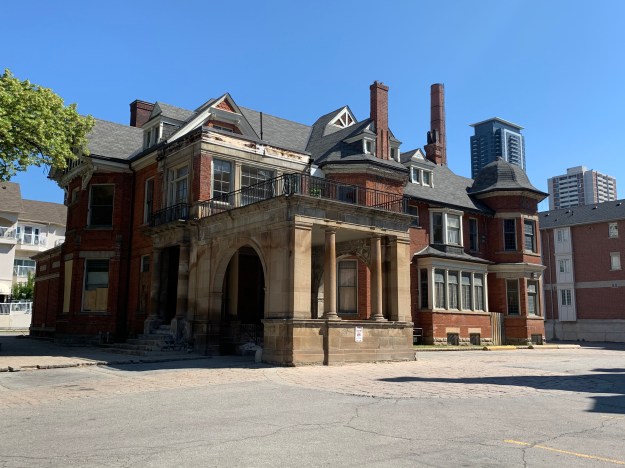
William R Johnston made his fortune as a clothing merchant. In 1875 he added his mansion to the growing list of mansions on Jarvis Street. It remained in the family until 1941 when it became the national headquarters for the YWCA. Today the building is home to Casey House which was the first independent AIDS/HIV hospice in Canada. A matching home was built by Johnston’s business partner but like so many of the grand mansions on Jarvis Street it has been demolished.
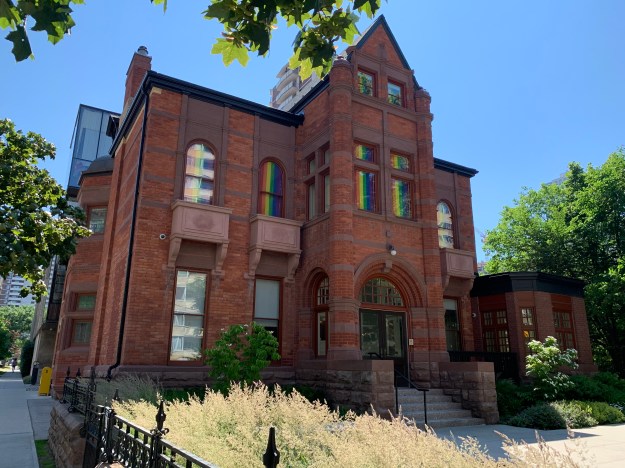
Thomas B Taylor had the house at 510 Jarvis built in 1888. Taylor had been involved in three paper mills along the Don River including the one at Todmorden.
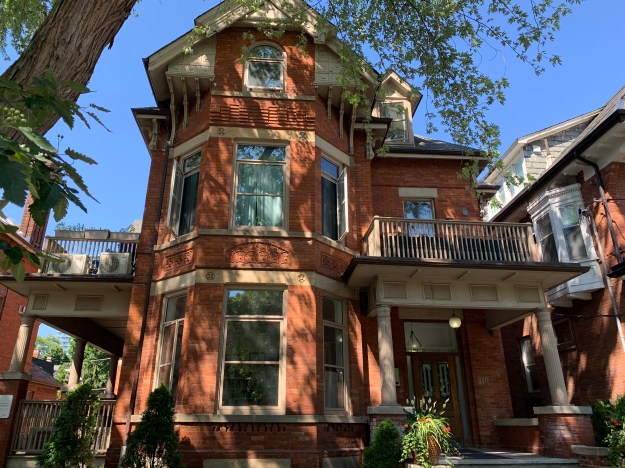
The house at 471 Jarvis Street was built for Thomas Thompson in 1874. The house goes by the name Elderslie and was owned at one time by Alexander Morris who served as a Conservative for Toronto East. He was in opposition to the government of Oliver Mowat who lived at 372 Jarvis Street.

Oliver Mowat bought a lot at 372 Jarvis Street in 1856 to build a home for himself. Mowat was one of the Fathers of Confederation and later served as the Premier of Ontario. His six consecutive majority governments sets a record of 24 years in power and speaks of how well loved he was. This Georgian style house was only his for six years before he sold it. Over the years it has belonged to several people as well as being headquarters for CBC for awhile. It currently serves as Canada’s National Ballet School . There are further pictures and details in our blog celebrating Sir Oliver Mowat and his contributions to Canada.
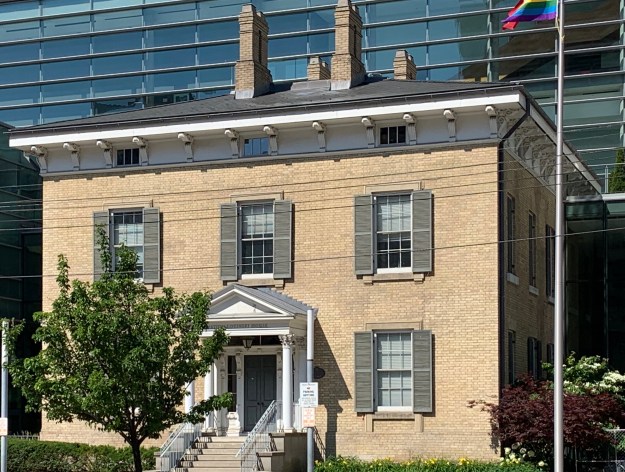
Beside the Jarvis Street Baptist Church, at 337, stands a house that was built in 1849 for Samuel Platt. Samuel had made his fortune as a brewer until he went into politics in 1845 as a city councilor. In 1872 he became involved in planning the young city waterworks before being elected as an independent MP for Toronto East, a position he held until 1882. His house now serves as the Toronto Baptist Seminary, also known as Church House to the pastors who visit there.

The house at 314 Jarvis Street was built in 1865 and is known as the Sheard House. The house was in the family for decades with some prominent members of the community living here. Joseph Sheard was the mayor of Toronto from 1871 to 1872. In 1901 his son Dr. Charles Sheard renovated the house. Dr. Sheard was Toronto’s Chief Medical Officer of Health and was an MP from 1917-1925. During WW2 the home was divided into apartments and eventually it was sold to developers. The original proposal for a 43-story condo was rejected by the city. The home was gutted by a fire in January 2016 and now the redevelopment of the site is going ahead. It looks like the new proposal is going to incorporate part of a wall.
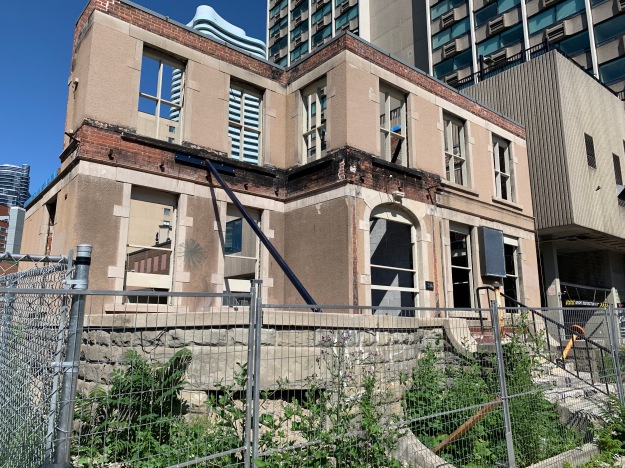
The building at 290 Jarvis was built in 1890 and is a style known as Richardsonian Romanesque. It appeared for only about 20 years and is attributed to an architect named Henry Richardson. It is known as the William Carlyle House and there is a mirror image home at 280 Jarvis Street from 1891 that is also sitting empty and boarded up. The two of them have historical designations and are intended to be incorporated into a new 25 story condo development.
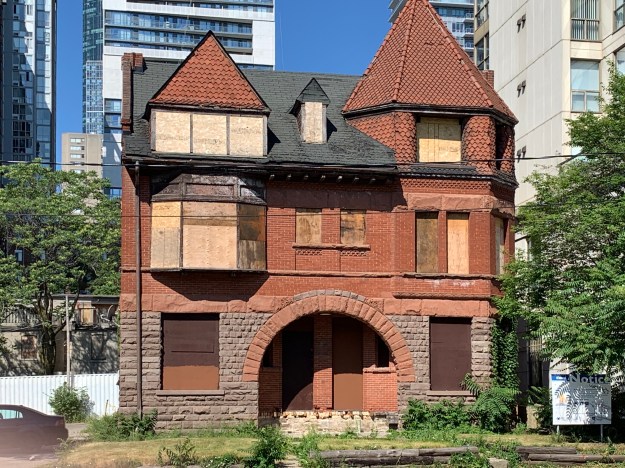
My personal favourite Jarvis Street mansion is found at number 504 and so it is presented out of sequence and as the cover photo. This Richardsonian Romanesque house was built in 1889 for George H. Gooderham. The Gooderham family owned the Gooderham and Worts distillery that dominated the waterfront and today is known as the Distillery District. At least half a dozen family members owned mansions within a few minutes walk of George’s new mansion. The conical tower on one side is paired with a bald gable on the other end. Accents are cut from Credit Valley stone that could have come from the Willoughby Property.
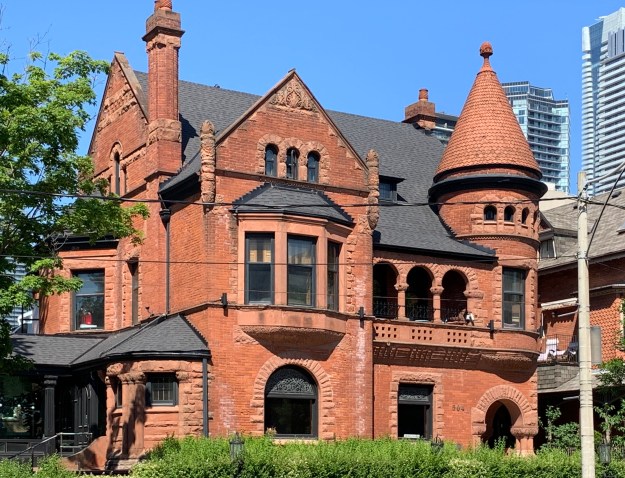
There are several other interesting old homes along this stretch of Jarvis Street which are worth checking out if you’re passing through this part of town.
Google Maps Link: Jarvis Street
Like us at http://www.facebook.com/hikingthegta
Follow us at http://www.hikingthegta.com
Look for us on Instagram
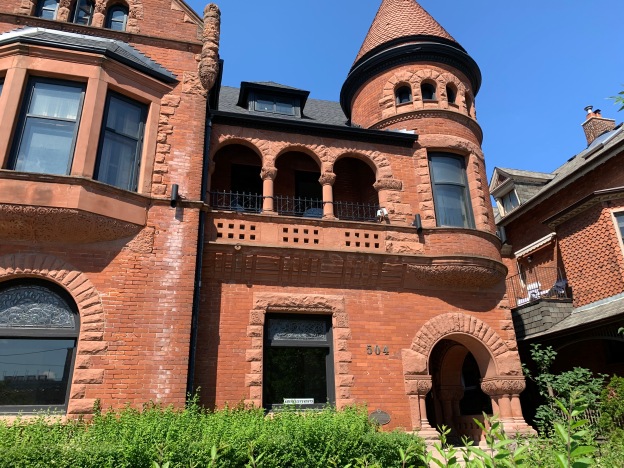
Pingback: Gooderham Architecture | Hiking the GTA
Very interesting article and it pains me to see historical buildings even used into the redevelopment of land greedy developers it still destroys the true history of the early history of City of Toronto, these magnificent homes should be conserved and protected by the City because these homes if they were not built in Toronto than much of Toronto’s History would not have developed the way it has. These buildings are a footprint though maybe slight it’s still part of the many footprints on the pathway to the history and development of Cities like Toronto and should be preserved by the City that was built or helped being built by the industrial giants and political historians of the City. It sickens me when I see the important history of once small and growing cities being lost to prosperity and uncaring land developers many who are not based in Canada and do not care about the historical importance of the builders of these Grand Estates.
Pingback: The First Seven Years | Hiking the GTA
Pingback: A Toronto tragedy put to rest | Finding Hope Ness
I recently came across your blog and this post in particular while working on a second draft of a book based on my maternal, Thompson family history. The Thompson heritage house on Jarvis Street was built for, or by to some extent, my great, great maternal grandfather Thomas Thompson Sr. I have a blog, Finding Hope Ness, and I’m planning to write a post about getting through winter by finishing a book long overdue. I would like your permission to use your photo of the Thompson house, with a credit, of course. The book I am working on, working title, ‘A Toronto Tragedy,’ focuses on my maternal grandmother’s tragic life. FYI, one of the events contributing to her misfortune, and the Thompson family’s tragedy in general, was the collapse of the Home Bank of Canada, brought on to a large extent by Sir Henry Pellatt’s continuing construction of Casa Loma after the First World War. I can be reached via comment on the ‘about’ section of my Finding Hope Ness at findinghopess.com. Thanks.
Why are we allowing these developers to strong arm us? These fires were most likely the cause of purposeful arsons. And it seems to be happening quite frequently, look at that project on SW corner of Yonge and Bloor, same thing happened there. Too many of our historical buildings are being targeted. We need to put in more of an effort at preservation.
Pingback: Somerset House Hotel | Hiking the GTA